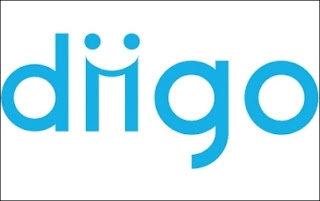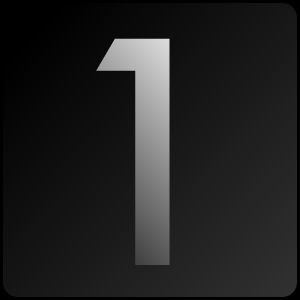





















































































One of the best things I did last school year was create and enhance my Personal Learner’s Network or PLN (as we, “in the know” say). At first, all the different networks and abundance of information that was coming my way overwhelmed me. In one week I joined several Nings, set up a twitter account, set up my iGoogle page and subscribed to several blogs and wikis. The week after, I was swamped with so much new information that I could hardly find anytime to read it all. Information overload!
I found the conversation and new information about education very positive, but at the same time I wanted it to be centralized so I could filter what I wanted and reap the benefits of stimulating content. I also discovered that my PLN was much better than any Professional Development my school had provided in the past few years. I was now privy to a plethora of engaging conversations and progressively helpful content in my field. I was learning at my own pace and not sequestered to an auditorium on a bright summer day. Like the Verizon commercials, my network was ubiquitous.
Since starting my PLN I have weeded out the junk and managed to stay current with educational trends. I have a constant flow of information that appeals to my educational palate arriving on my screen daily. I have met and regularly correspond with many new educators, innovators and bloggers that are always willing to share and listen. In short, this is what every educator wants his or her school to be, a constant flow of information and collaboration. However, this is not the case in most districts.
By now you are bursting at the seams, you want to get started and begin developing your own PLN. Here are five things I would recommend to start your PLN before the beginning of the next school year.
1. Join the Classroom 2.0 Ning
This was my first step in developing my PLN and joining a Ning is simple an easy. But first, you might be asking, “what did he just say? A ning? Sounds like a Monty Python and the Holy Grail reference!” A Ning is an online platform for people to create their own social networks. A ning is basically your own personal facebook page tailored around a specific subject. You only have to provide basic information when setting up your Ning profile and in minutes you can be communicating and collaborating with thousands of like minded educators.
The Web 2.0 Classroom Ning allows members to share links, events, blogs and topic discussions. Members can also e-mail and chat with each other through the Ning website. As a Ning member, you will have your own personal page where other members can leave comments, add you as a colleague and can see your action log – basically shows anything you have posted or commented on throughout the Ning.
The Ning is a great start to develop your PLN and will have you collaborating and communicating with educators from all over the world in minutes.
You can access the Classroom 2.0 Ning at http://www.classroom20.com/ and you can access and start your own Ning at www.ning.com. You can also read an earlier blog post of mine that focused on setting up a Ning in your school district.
2. Join Twitter
At first I was hesitant about twitter and didn’t really buy into its intrusive nature, however, I have grown to really appreciate this platform. Twitter allows you to maintain a constant stream of information coming to you throughout your day at a rate of 140 characters per tweet or CPT. As a Tweep (a person who tweets), you can follow whom you want and block those you don’t want.
As a member of twitter I can keep up with colleagues in my PLN on a daily basis. I can read articles they post and respond to them privately or via the main feed. With twitter, I suggest finding a few good people to follow initially and then slowly expand your radius, as you get more comfortable with tweeting. Twitter also allows you to post photos, videos and links.
What I have gained most from twitter is the ability to access articles and information that I may have never seen. I have been turned on to new bloggers and many good books that have surfaced in tweets. Like any network, you have to weed out the material you want and not get overwhelmed by the one tweep who will post 300 tweets a day. There are also several desktop platforms that you can utilize to filter and showcase your twitter feed. The one I recommend using is TweetDeck. It can be used on any OS and its user interface is simple and user friendly.
Finally, Twitter employs a unique language. At times, this can be intimidating to most newbies, but fear not, there are plenty of twitter guides out there that are free and online. Three Twitter aids I recommend for the twitter newbie
A) Twittonary
Twittonary is a database of all the words utilized in the twitter lexicon. You can type in a word or simply select a letter and begin studying up for your Twit-cabulary Quiz this Friday!
B) Watch this Common Craft video
C) Watch this Great Slide show
Please feel free to follow me on twitter @andycinek and happy tweeting!
3. Read and Comment on Blogs
I have been turned on to many great blogs as a result of the previous two items listed above. As a blogger, I put a lot of time into my posts and try and promote an atmosphere of collaboration and communication. I never blog for the stats, but simply, to share information in my field without any concern for fame or fortune (Although if Scorsese ever returns my calls, we might be talking iTeach: The Movie!). Therefore, when I read other blogs I want to spend a few moments to take in the content, process it, and provide the author with my feedback. Leaving comments on others blogs is also a great way to get your own blog noticed. Again, not for the fame and fortune, but for the exchange of ideas and opinions.
Each week, dedicate yourself to reading several blogs and leave a constructive comment on one of those blogs each day. If you want to leave more than one, good for you! However, if you choose one a day to comment on, you will truly be sharing in the learning community and you may meet some new colleagues for your PLN!
4. Become Familiar with iGoogle and Google Reader
iGoogle is a great start for organizing your PLN. If you want to really filter your content, iGoogle is the place to start. iGoogle lets you create a personalized homepage that contains a Google search box at the top, and your choice of any number of gadgets below. Gadgets come in lots of different forms and provide access to activities and information from all across the web, without ever having to leave your iGoogle page. Here are some things you can do with gadgets:
* View your latest Gmail messages
* Read headlines from Google News and other top news sources
* Check out weather forecasts, stock quotes, and movie show times
* Store bookmarks for quick access to your favorite sites from any computer
* Design your own gadget. ***
***Courtesy of http://www.google.com/support/websearch/bin/answer.py?hl=en&answer=20324
Google reader is another application that you can access directly from your iGoogle start page. Google Reader is Web-based aggregator, capable of reading Atom and RSS feeds online or offline. It allows you to take all the blogs you subscribe to or authors you enjoy reading and access them all in one place. Google reader has become one of my best friends and definitely beats book marking all of the blogs and authors you read. Google reader can also be accessed on most new smart phones. The iPhone has a great interface for iGoogle and Google Reader as well as the Android.
5. Attend a Conference
Attending a conference can not only bolster your PLN but also bring it to life. At times I feel like I know all these people whom I correspond with daily via twitter, nings, blogs, etc., but never really meet them. Attending a conference allows the little square photo icon to come to life. Plus, attending a conference will bring to life many of the discussions and conversations you have on a daily basis.
One way of keeping up with your PLN conference schedule is to create a google calendar with several members of your PLN. All users can share this calendar and when someone adds a conference to this calendar it will show up. I currently share a conference calendar with a colleague of mine and an esteemed member of my PLN. Her name is Donelle O’Brien and you should leave this blog and begin reading hers at http://lifelonglearning20.edublogs.org/
I hope this helps and will give you something to experiment with before you get back to school and are too overwhelmed with texts, schedule changes and parent teacher conferences. I hope to see you in my PLN in the near future!
 In years past, we all used to browse through endless web pages, bookmark the ones we liked and then scroll down a long list trying to locate that “great site we found but cannot remember what it was about”. Sometimes, if we found a site that had a dancing hamster, we would bookmark and e-mail it to friends and relatives. In my district, there is always the one teacher who loves to send out a mass e-mail that is simply a link to a great site that he or she found. It is a kind thought, but working on a PC at school gives me reservations about clicking. What if I click and instead of a great new blog I get dancing hamster ninja porn and all of my districts computers are infected right before final grades are due!!!!
In years past, we all used to browse through endless web pages, bookmark the ones we liked and then scroll down a long list trying to locate that “great site we found but cannot remember what it was about”. Sometimes, if we found a site that had a dancing hamster, we would bookmark and e-mail it to friends and relatives. In my district, there is always the one teacher who loves to send out a mass e-mail that is simply a link to a great site that he or she found. It is a kind thought, but working on a PC at school gives me reservations about clicking. What if I click and instead of a great new blog I get dancing hamster ninja porn and all of my districts computers are infected right before final grades are due!!!! them that this year you want to create an online resource library for links and blogs that fit your discipline. For those who say, “Now what? Something else to sign up for and receive junk mail” bribe them with candy. I usually go with Butterfinger, but also provide moist towelets, because no one wants a sticky keyboard!
them that this year you want to create an online resource library for links and blogs that fit your discipline. For those who say, “Now what? Something else to sign up for and receive junk mail” bribe them with candy. I usually go with Butterfinger, but also provide moist towelets, because no one wants a sticky keyboard!


